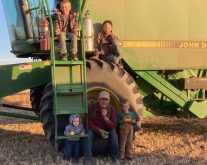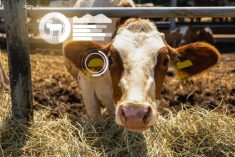This third instalment of a series on succession planning offers a four-step plan for the retiring generation
As you will recall from parts one and two in this series, succession planning is often most successful if either the older generation or the younger generation takes ownership of developing options to get started.
In part two we walked you through the analysis process from the viewpoint of the younger generation. In part three, we’ll approach the same stuck nut with a different wrench, looking at it from the aspect of the retiring generation.
Vince Lombardi said, “The harder you work, the harder it is to surrender.” This is very true of farming as well. It’s difficult to get started on a plan to remove yourself from the very thing that you have devoted your life to. As we did for the younger generation, we use a process to break the task down into smaller, easier to comprehend steps.
Read Also

Gentle treatments for pain in the neck
Heading toward year-end, people unknowingly tense up against the cold and busyness, causing neck pain that can often be treated with appropriate support and gentle mobility, athletic therapist Kathlyn Hossack says.
Step 1: Establish a clear priority
Understanding the priority is a crucial first step. Clearly understandings whether retirement or succession is your priority will allow you to move forward in the process. If you have not chosen, you will waiver back and forth delaying everything until someone loses their mind or someone loses interest.
This choice in priorities is not necessarily a choice in action, but identifying the priority becomes a strong compass when navigating the next steps.
Step 2: Determine financial position
The retiring generation needs to clearly understand what assets and capital are at their disposal in this planning process. They must understand not only the value of the asset but also the liquidity. For example a non-registered savings account and a pension plan may have the same asset value but will have significantly different implications as they cycle into revenue streams.
This step may also include a detailed projection of retirement income sources including Canada Pension Plan, Old Age Security, pensions, land rental payments, salary, payment for assets or other income.
Step 3: Determine needs
Depending on your answer in Step 1, different areas will inherently have priority in determining needs. For example, if your priority is to retire in the lifestyle that you desire and help children and the farm outside of that plan, your retirement planning will take priority. If your priority is succession, your planning will start with sustainable farm business planning, with financial surpluses used for retirement planning on a reactive basis.
This step also includes determining how to treat your non-farming children equitably.
Step 4: Structuring the plan
This step brings all the planning together by deciding what tools, agreements, and structure to assign to the decisions and capital. Our fourth article in this series will detail the numerous agreement and approaches that we have seen and the implications of each. †
RETIREMENT
SUCCESSION














